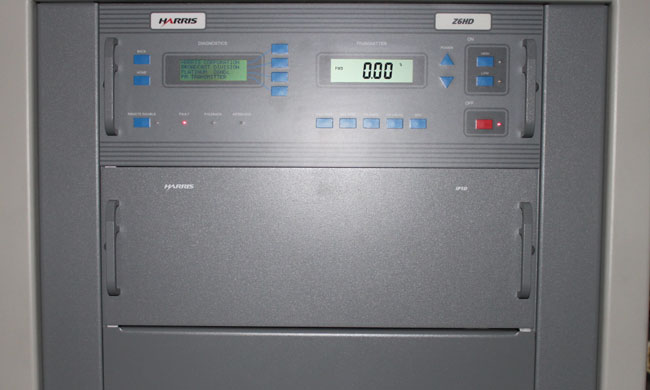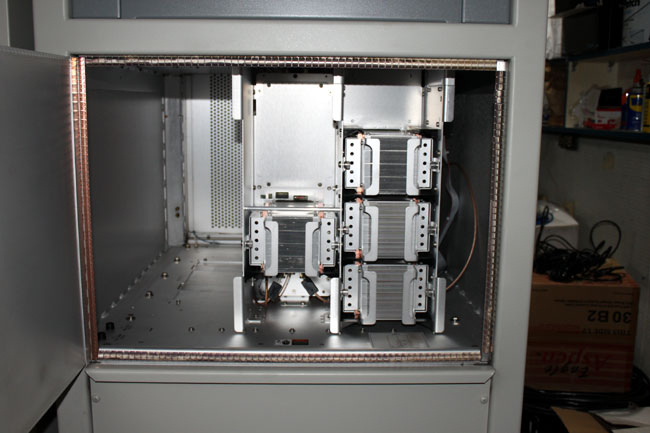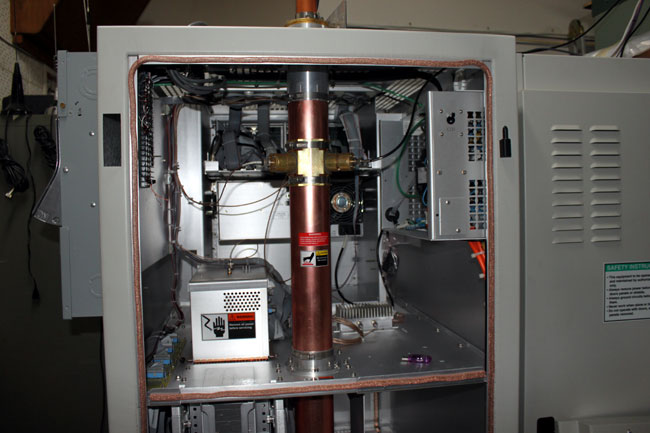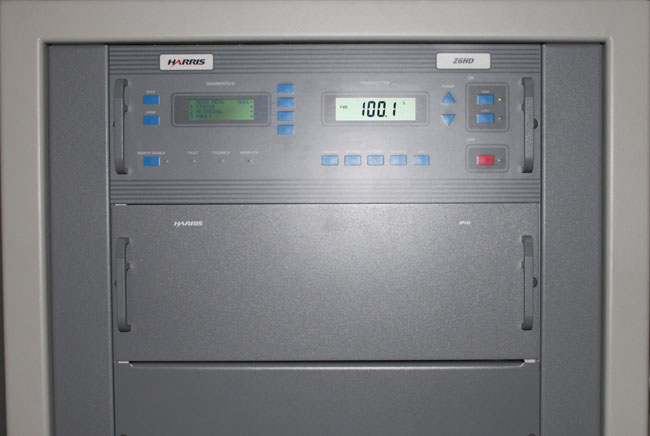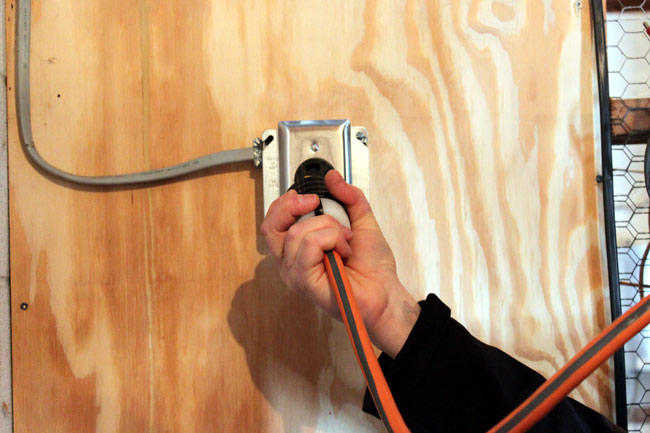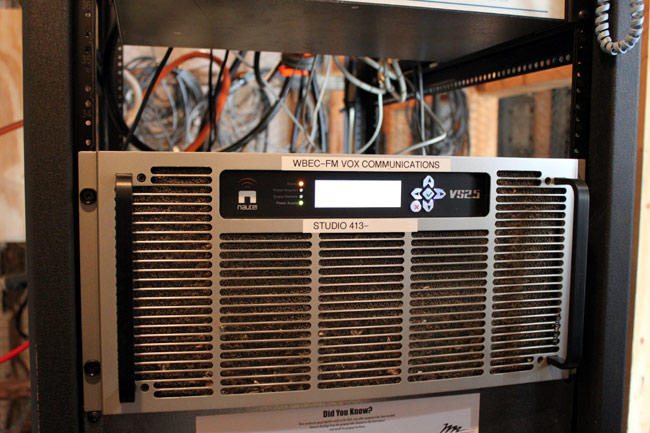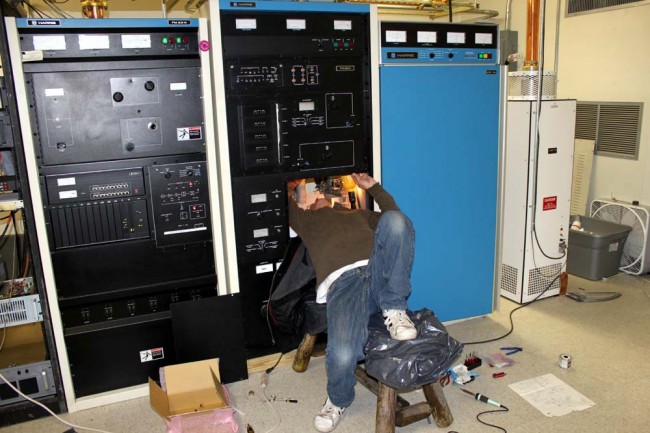This is a neat piece of kit, designed to save those late-night/early morning callouts, which is the ultimate goal of all broadcast engineers, or at least it should be. This seems like a really good idea, however, BE has discontinued the product line, and the last manual update is from 2000.
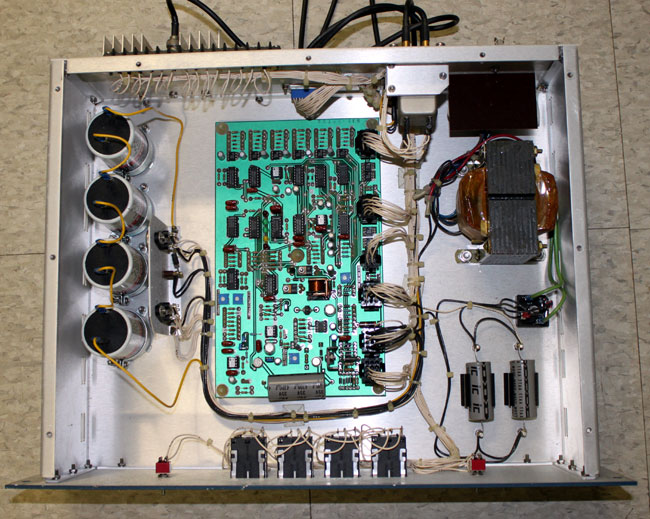
A small four-port coax switch is located next to the power supply transformer. This is controlled by the circuit board. The circuit board senses a loss of excitation by detecting a forward power level below the threshold set on the board. The power sample comes from the exciter forward power remote metering terminals. Thus, it can be used with any exciter(s) that have a remote forward power sample.
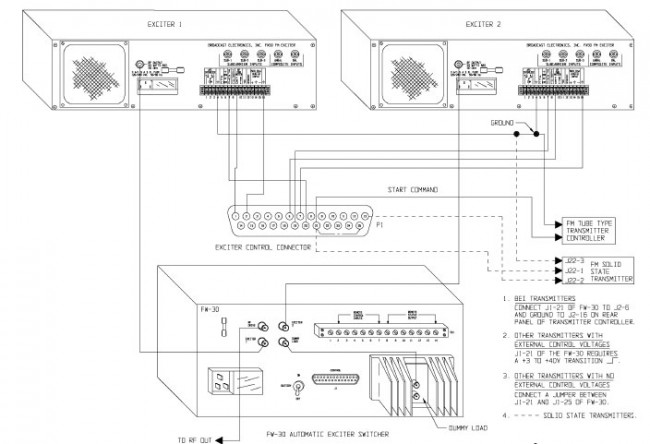
The idea is to use the RF fault function output of the FX-30 (later FX-50) exciter to automatically switch from a faulted exciter to one that is working. Finally, it can be hooked to a remote control for manual switching. The unused exciter is muted and routed to a dummy load mounted on the back of the unit.

An alternate configuration would be to route the backup exciter to the backup transmitter instead of the dummy load. This would create the best redundancy on a limited equipment budget. It also has a battery bank designed to hold the last state of the unit through a power outage. As we have a good-sized UPS powering the remote control, STLs, and satellite receivers, the batteries are not needed.
On the face of it, a pretty good idea. I have had a few exciters fail over the years, which normally means the backup transmitter is placed in service by remote.
I did download the manual, but since it is currently listed on the BE website, it’s probably not a good idea to post the schematic. Suffice to say, it is a tad bit complicated what with all the CMOS logic and that. It is very possible to duplicate the functions of this equipment with a simple RF forward power sample and set a failure threshold with a comparator circuit. Hook that to a small four-port coax switch and a couple of RF mute/un-mute commands to each exciter and: Viola! Automatic exciter switching!
Perhaps a good rainy day project.

